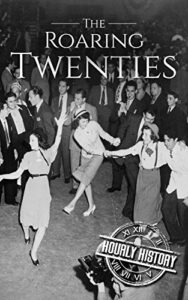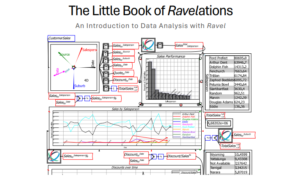In a very real sense, the roaring twenties was started by world war I, which started an economic boom for the United States.
European nations needed goods and services to fight the war, much of which was supplied by American firms. During the war, the financial center of the world shifted from London to New York. And after the war ended, Europe needed to be rebuilt, and American firms provided goods and services to these reconstruction efforts.
As some of the financing of the war was done via Liberty Bonds (the US stayed on the gold standard during this war), the US government successfully deferred demand by removing money from the US economy. They started redeeming those bonds after the war, thereby putting money back into the US economy, and stimulating demand.
————————————
This post is part of a larger series:
The history of banks and banking regulation
And sub-series:
United States Banking and Bank Regulation History
————————————
The combination of technological advances in industrial processes, improved manufacturing processes developed for war mobilization, and deferred demand due to Liberty Bonds, led to the ability to produce more stuff, for less investment, at a time when there was increasing demand.
Consumer demand started driving economic growth, as people bought labour-saving devices for their homes, such as washing machines and electric irons, as well as cars.
The 1920s is when the “personal automobile” became a reality for millions of Americans.
Investing in the production of goods and services generated good returns, this transformed the economy and led to what is called The Roaring Twenties.
However, as Hyman Minsky demonstrates in his Financial Instability Hypothesis, financial instability comes from the confidence created by financial stability.
With investments providing such good returns, more people wanted opportunities to invest, and opportunities to invest more.
Investment banks, of course, took advantage of this and as stock speculation profits were hard to ignore, over time, individual investors did too.
The demand for stocks outstripped their supply, which caused stock prices to rise even further.
People started buying stocks with borrowed money, and this is what fueled the asset bubble that, when it burst, triggered the great depression.
During this asset bubble, the main culprit was the ability to buy stocks on margin.
This is where the brokerage loans you money and you use that money to buy stocks. During the 1920s, people could buy stock with as little as 10% of the required money.
As an investor, you could buy $1000 worth of stock with $100 of cash and a $900 loan from the broker.
If the stock price goes up such that your $1000 is now worth $1200, you sell the stock for $1200, pay the broker back their $900, and you’ve made $300 on an initial investment of $100.
But, if the stock price goes down, you need to add money to your brokerage account to maintain your margin.
If the stock price goes down such that your $1000 is now worth $800, you now have a $900 loan on an $800 stock. The rules at the time allowed for a loan of no more than $720 on stock ownership of $800 (90%). Hence the investor has to make a “margin call” and give the broker $180 ($900 – $720 = $180) to maintain their margin.
When the stock market crashed on the 28th of October 1929, it created margin calls throughout Wall St that people didn’t have the money to make.
As such, payment obligations could not be met, but other people were counting on those payments being made in order to meet their payment obligations.
This inability to meet payment obligations rippled through the entire financial system, resulting in defaults and bankruptcies on such a scale that the entire financial system ground to a halt.
All this was triggered because the stock market lost 13% of its value on Monday, another 12% on Tuesday, and 50% of its value in a period of fewer than three weeks, thereby creating an unprecedented level of debts that could not be repaid.



